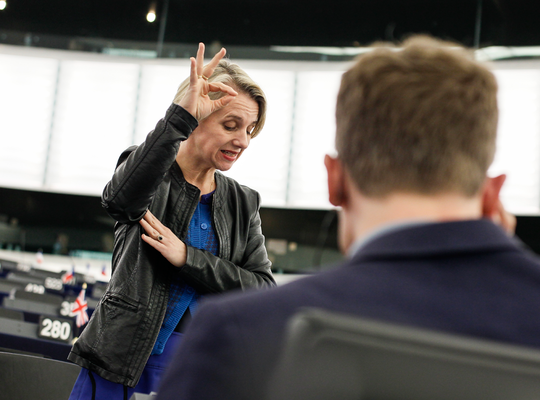You are here
Improved status for sign language interpreters in Europe

By an overwhelming majority, the European Parliament has approved a resolution, which among other things advocates an improved status for sign language interpreters in Europe. “To ensure equal participation in society by sign language users, interpreters are indispensable. However, due to the incomplete status, there is a marked shortage of sign language interpreters. This causes many deaf people to miss out on their place in society,” says MEP Helga Stevens, one of the proponents of the resolution.
The European Union is home to over a million sign language users, but there are only 6,500 interpreters. “In plain numbers that means there is one interpreter available for every 160 sign language users on average. That is simply not doable,” says Helga Stevens. What’s more, there are enormous differences between the Member States. “In some countries there is only one interpreter per 2,500 sign language users. And in Slovakia the sign language interpreters’ hourly wage is just EUR 2.60. Naturally such wages are not going to attract any interested young people, despite training as a sign language interpreter being essential for the equality of deaf sign language users.”
Milestone for deaf people and their interpreters
“For a long time, sign language interpreters were seen as assistants to deaf people,” says Helga Stevens, who is herself the first female deaf MEP. “Often the deaf person’s family functioned as an interpreter, even during official events. In many European countries that is still the case, but the situation is getting better and sign language interpreting is gradually being seen as a proper profession.”
However, much work remains to be done. “It therefore gives me great pleasure that we have gained the majority support of all parties in the Chamber for this new resolution. The previous ones dated from as long ago as 1988 and 1998 and were in dire need of an update. To this end, I received a great deal of useful input from organisations for the deaf and for interpreters. This resolution is then an important policy instrument at regional, national and European level too,” Helga Stevens concludes. “The resolution is also a direct product of a conference that I organised at the end of September and at which for the first time in history all 24 spoken EU languages and all 31 EU sign languages were used together.”

